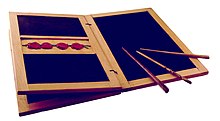
“Our education effectively deracinated us,” she writes, “suspending us in a kind of colonial non-space designed to ensure that we did not identify too closely with any place.”她寫道:“我們的教育有效地使我們脫離了種族,將我們懸浮在一種旨在確保我們不會與任何地方過於緊密地認同的殖民非空間中。” google
During his relatively short life, Italian Renaissance artist Raphael rose from obscurity to establish himself as the dominant painter, architect and all-round artistic designer at the Papal court in Rome



Central to Raphael’s success was his brilliance in drawing, as is shown in this delicate black chalk drawing of a female saint, dating to around 1500.
Following the 500th anniversary of Raphael’s death of in 2020, our latest free display highlights his development as a draughtsman, and shows how his talented pupils continued to draw with a similar inventive and free-flowing spirit.
Experience the Renaissance master's exquisite drawings and trace his influence through the work of his pupils: http://ow.ly/rsyz30s9E5H
 Raphael (1483–1520), A female saint. Black chalk over stylus on paper, around 1500. Read more: http://ow.ly/ri1g30s8JTe
Raphael (1483–1520), A female saint. Black chalk over stylus on paper, around 1500. Read more: http://ow.ly/ri1g30s8JTe- uprooted from one's natural geographical, social, or cultural environment."a deracinated writer who has complicated relations with his working-class background"
A stylus (plural styli or styluses[1]) is a writing utensil or a small tool for some other form of marking or shaping, for example, in pottery. It can also be a computer accessory that is used to assist in navigating or providing more precision when using touchscreens. It usually refers to a narrow elongated staff, similar to a modern ballpoint pen. Many styluses are heavily curved to be held more easily. Another widely used writing tool is the stylus used by blind users in conjunction with the slate for punching out the dots in Braille.[2]
Etymology[edit]
The English word stylus has two plurals: styli and styluses.[3] The original Latin word was spelled stilus; the spelling stylus arose from an erroneous connection with Greek στυ̑λος (stylos), "pillar".[4]
The Latin word had several meanings, including "a long, sharply pointed piece of metal; the stem of a plant; a pointed instrument for incising letters; the stylus (as used in literary composition), 'pen'".[4] The last meaning is the origin of style in the literary sense. The Latin word is probably derived from the Indo-European root *stei- "to prick", also found in the words stimulus "a goad, stimulus" and instigare "to incite, instigate".[5]
Ancient styluses[edit]
Styluses were first used by the ancient Mesopotamians in order to write in cuneiform. They were mostly made of reeds and had a slightly curved trapezoidal section.[6][7][8] Egyptians
stylus
- 音節sty • lus
- 発音stáiləs



沒有留言:
張貼留言